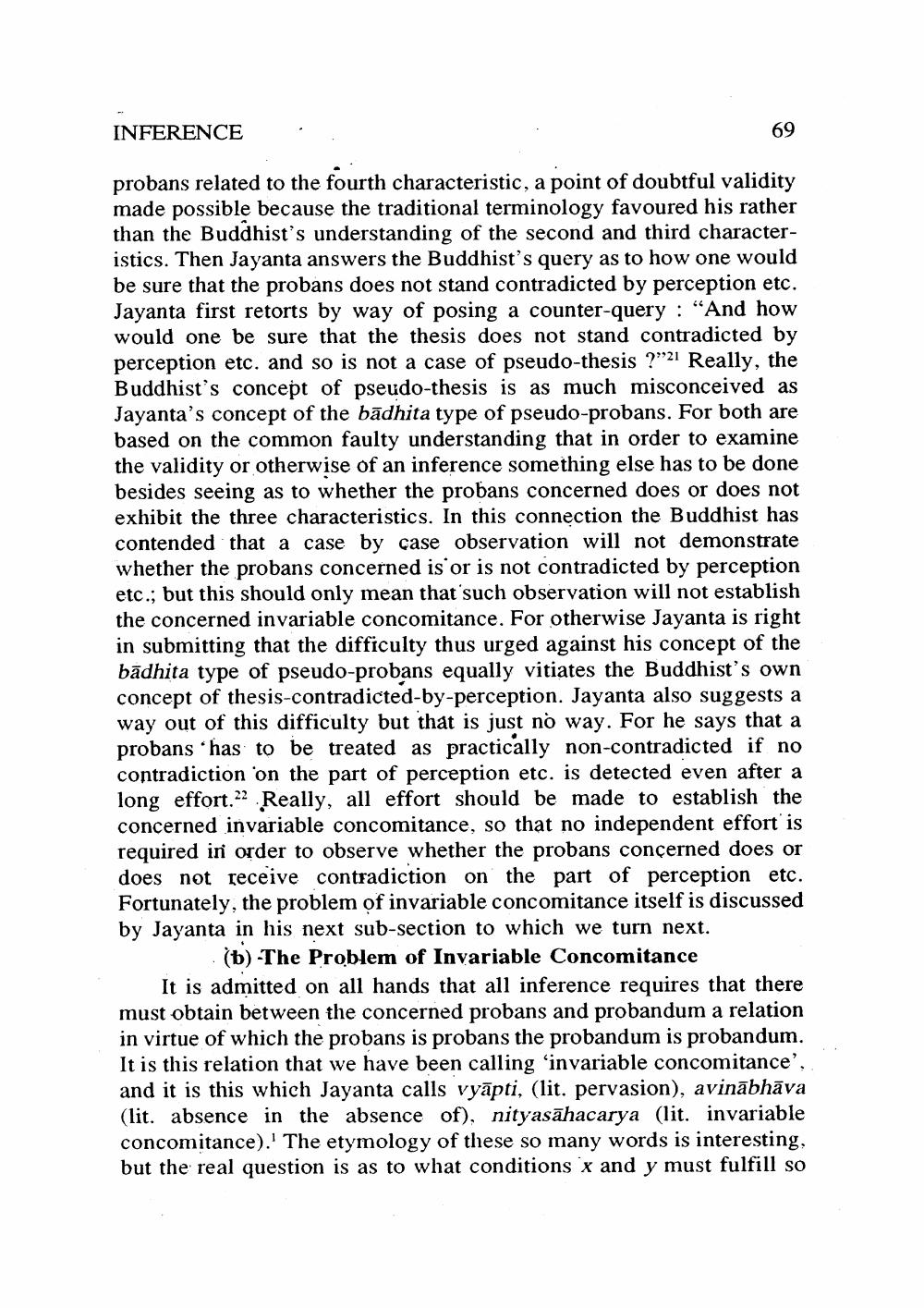________________
INFERENCE
69
probans related to the fourth characteristic, a point of doubtful validity made possible because the traditional terminology favoured his rather than the Buddhist's understanding of the second and third characteristics. Then Jayanta answers the Buddhist's query as to how one would be sure that the probans does not stand contradicted by perception etc. Jayanta first retorts by way of posing a counter-query : “And how would one be sure that the thesis does not stand contradicted by perception etc. and so is not a case of pseudo-thesis ?"21 Really, the Buddhist's concept of pseudo-thesis is as much misconceived as Jayanta's concept of the bādhita type of pseudo-probans. For both are based on the common faulty understanding that in order to examine the validity or otherwise of an inference something else has to be done besides seeing as to whether the probans concerned does or does not exhibit the three characteristics. In this connection the Buddhist has contended that a case by case observation will not demonstrate whether the probans concerned is or is not contradicted by perception etc.; but this should only mean that such observation will not establish the concerned invariable concomitance. For otherwise Jayanta is right in submitting that the difficulty thus urged against his concept of the bādhita type of pseudo-probans equally vitiates the Buddhist's own concept of thesis-contradicted-by-perception. Jayanta also suggests a way out of this difficulty but that is just no way. For he says that a probans has to be treated as practically non-contradicted if no contradiction on the part of perception etc. is detected even after a long effort.22 Really, all effort should be made to establish the concerned invariable concomitance, so that no independent effort is required in order to observe whether the probans concerned does or does not receive contradiction on the part of perception etc. Fortunately, the problem of invariable concomitance itself is discussed by Jayanta in his next sub-section to which we turn next.
(b)-The Problem of Invariable Concomitance It is admitted on all hands that all inference requires that there must obtain between the concerned probans and probandum a relation in virtue of which the probans is probans the probandum is probandum. It is this relation that we have been calling 'invariable concomitance'. and it is this which Jayanta calls vyāpti, (lit. pervasion), avinābhāva (lit. absence in the absence of), nityasāhacarya (lit. invariable concomitance).' The etymology of these so many words is interesting, but the real question is as to what conditions x and y must fulfill so




